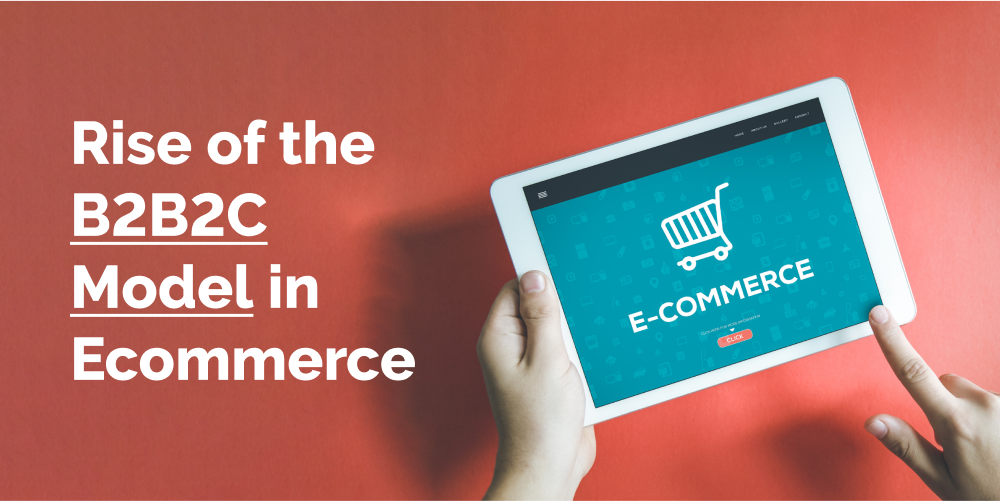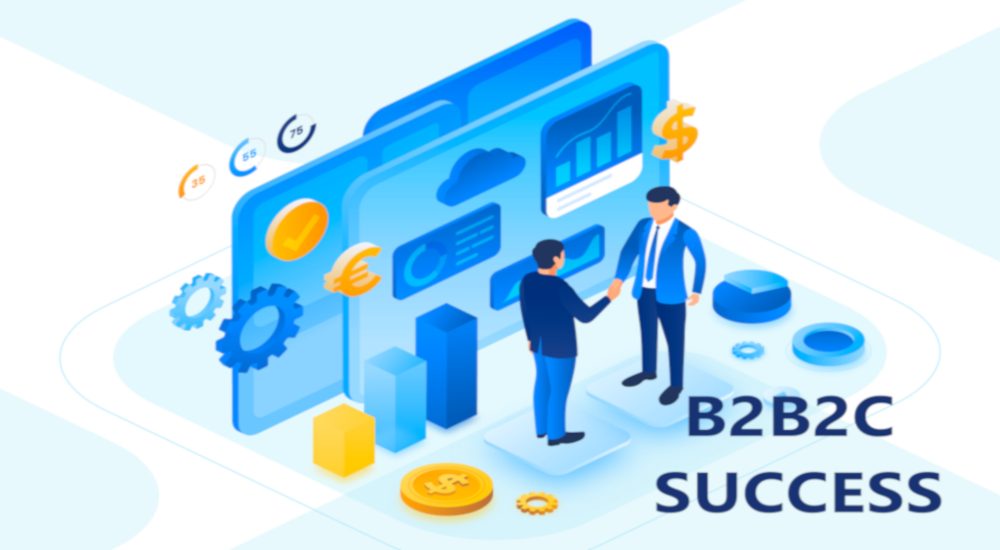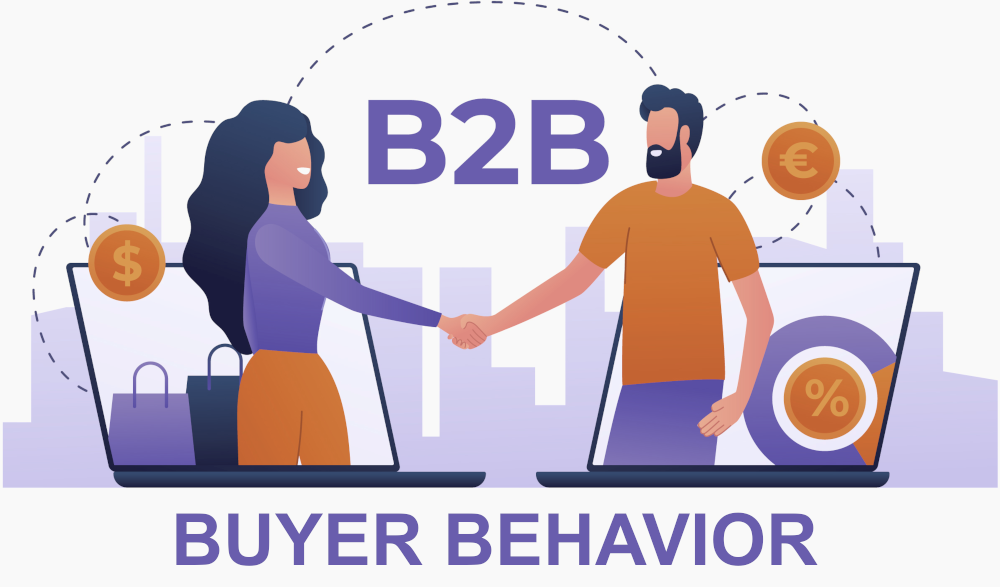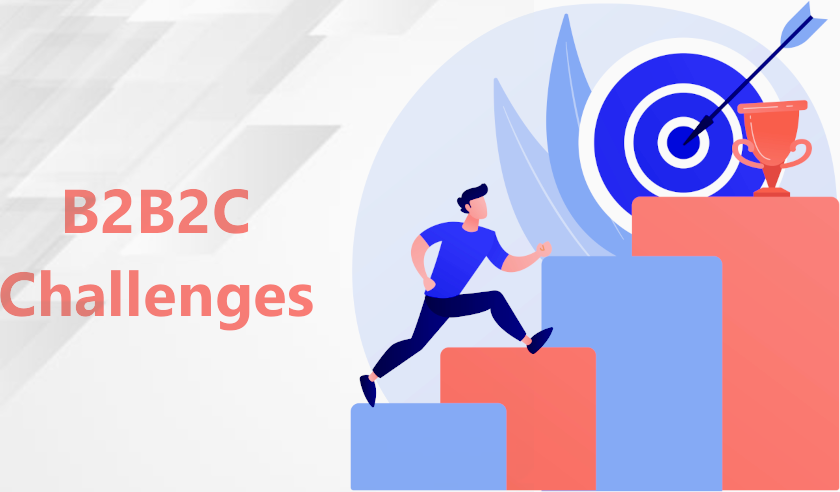Ecommerce Development, zBlog
The Meteoric Rise of the B2B2C Model in E-commerce
trantorindia | Updated: September 8, 2023

E-commerce has been fundamentally transformed in recent years through innovative collaboration models, allowing businesses to reach today’s consumers better. One of the most impactful developments is the meteoric rise of B2B2C – business-to-business-to-consumer – partnerships.
What exactly is B2B2C? It refers to a strategic alliance where two or more businesses jointly provide complementary products or services directly to end consumers. For example, a software development company may ally with a hardware company, so their integrated offerings provide a streamlined experience for customers.
This model differs from traditional B2B sales, where businesses sell to other businesses, and B2C models, where companies sell directly to consumers. With B2B2C, the connections between enterprises form the bridge to optimized consumer access.
The Staggering Scale of B2B2C’s Rise
The B2B2C model is skyrocketing in popularity for several compelling reasons:
- Remote work has fundamentally altered how consumers purchase products and services, creating demand for personalized, direct-to-home options. B2B2C allows companies to meet this need.
- It enables proven scalability, expanding reach, and tapping new consumer bases without overstretching internal resources. B2B2C provides flexibility.
- Data sharing between strategic partners grants invaluable consumer insights to drive innovation and precision marketing. B2B2C enables business intelligence.
- Leveraging an established brand through alliances accelerates growth and trust. B2B2C minimizes risk.
The sheer scale of B2B2C’s expansion makes its potential clear:
- The global B2B2C market size is expected to reach a staggering $1.7 trillion by 2025, up from $1.2 trillion in 2021. (Source: Grand View Research)
- B2B2C sales are growing 25% faster than traditional B2B sales.
- The B2B2C market has a compound annual growth rate of 14.6%, projecting massive expansion. (Source: MarketsandMarkets)
With data like this, it’s obvious why B2B companies are rapidly pursuing B2B2C partnerships. This model is radically reshaping modern e-commerce.
Critical Success Factors for the B2B2C Model

While B2B2C alliances provide immense opportunity, they have unique complexities enterprises must address:
- Building seamless data integrations across partner systems is essential for unified consumer experiences. This necessitates technical readiness.
- Clear customer ownership expectations and fair profit-sharing models must be defined early on. Ambiguity causes instability.
- Coordinated cross-channel promotion and marketing campaigns to harmonize branding. Dissonance is detrimental.
- Partners should differentiate, not replicate. For example, one excels at distribution while the other provides the core product. Unique value propositions strengthen the whole.
“B2B2C partnerships enable us to expand market reach enormously, but we ensure the combined offerings provide a streamlined customer journey under our brand,” notes John Smith, CEO of ABC Company. Careful orchestration is key.
The Rapid Evolution of B2B Buyer Behavior

When weighing B2B2C opportunities, it’s instructive to examine the rapid evolution of B2B buying behavior in the digital age:
- 70% of B2B buyers now use online channels to research products and services. (Source: Gartner)
- 60% of B2B buyers prefer companies with robust e-commerce capabilities. (Source: Salesforce)
- 50% of B2B buyers will pay more for a superior customer experience. (Source: Aberdeen Group)
- 40% of B2B buyers make purchases via mobile devices. (Source: eMarketer)
- 35% of B2B buyers use social media for product research. (Source: IDC)
- 30% of B2B buyers share data for personalization. (Source: McKinsey)
Today’s B2B buyers expect consumer-grade digital experiences. B2B2C collaborations allow companies to meet these expectations and make the digital experience a competitive advantage.
Industry Breakdown and Regional Analysis
While applicable across sectors, some industries are primed for more robust B2B2C expansion:
- Retail: 32.5% market share. (Source: MarketsandMarkets)
- Technology: 18.2% projected CAGR. (Source: MarketsandMarkets)
- Manufacturing: High complements.
- Logistics: Access to consumers.
Regionally, growth concentrates in:
- Asia Pacific: 35.3% market share. Booming digital adoption. (Source: MarketsandMarkets)
- North America: 30.2% share. B2B2C-friendly policies. (Source: MarketsandMarkets)
- Europe: Established infrastructure.
“We partnered with aligned healthcare tech providers in a B2B2C model,” says Michelle Thomas, CEO of HealthPro. “It allows us to offer integrated telemedicine solutions. Customers want streamlined platforms, not piecemeal tools.” Business-to-business-to-consumer by consolidating regional fragmentation.
Most Lucrative B2B2C Sales Channels
B2B2C alliances access consumers through various sales channels. The top performers:
- Online Marketplaces: 52% say most lucrative. Prebuilt audiences.
- Direct B2C E-commerce: 38% say most lucrative. Owned relationships.
- Social Media Sales: 20% cite strong returns. Brand intimacy.
- Email Marketing: 18% cite strong returns. Low cost.
“Online marketplaces provide built-in visibility and legitimacy,” notes John Campbell, VP of Sales at ProExport. “We team judiciously to access prequalified buyers while ensuring our brand message comes through clearly.” Marketplaces require brand strategy.
Top B2B2C Challenges and Mitigation Tactics

While rewarding, B2B2C has inherent challenges requiring mitigation:
- Fierce Competition: Differentiate strategically and focus on customer experience.
- Acquiring Customers: Leverage partner strengths and optimize cross-promotion.
- Retaining Customers: Coordinate seamlessly, deliver value, and nurture relationships.
- Compliance: Integration and transparency across all systems and processes.
- Security Concerns: Unified cybersecurity protocols ensuring end-to-end protection.
“Partnering for B2B2C does not mean compromising compliance or security,” says Chris Watts, CIO of CenTex Analytics. “If anything, it places more responsibility on us to ensure watertight integrations across all systems.”
Best Practices to Optimize B2B2C Success
Experts reveal core best practices for capitalizing on B2B2C:
- Obsess Over the End Customer: Make their experience the North Star.
- Deliver Personalized Experiences: Leverage data and partners’ strengths in customization.
- Utilize Technology Intelligently: Integrate systems for efficiency and insights.
- Forge Strong Partner Relationships: Strategic alignment minimizes friction.
- Prioritize Marketing and Sales: Awareness and proven tactics drive revenue.
“The fundamental mindset shift is focusing everything on your end customer,” advises James Lee, VP of Partnerships at Apex Technologies. “Technology gives us tools to understand customers better than ever. Our partnerships succeed by combining strengths to deliver personalized buying journeys.”
Bright Outlook for the Future of B2B2C
What does the future hold for B2B2C models? Immense ongoing expansion:
- 68% agree the market will keep booming rapidly. (Source: B2B2CFutures Survey)
- 66% see technology continuing to disrupt B2B sales. (Source: B2B2CFutures Survey)
- 64% expect customer experience demands will escalate. (Source: B2B2CFutures Survey)
- 62% believe competition will intensify. (Source: B2B2CFutures Survey)
- 60% predict more complex regulations. (Source: B2B2CFutures Survey)
“B2B2C is becoming integral to future-proofing companies in the digital economy,” says Olivia Chen, Futurist. “As technology transforms B2B commerce, customers gain more power over their journey. To adapt, organizations must embrace models, allowing them to meet accelerating customer expectations. The data clearly shows B2B2C’s soaring trajectory.”
Keys to Unlocking B2B2C Potential
Based on empirical success drivers, experts outline keys to maximizing business-to-business-to-consumer results:
- Know Your Customers Deeply: Tailor experiences to their priorities.
- Deliver Exceptional Experiences: Make every interaction responsive and rewarding.
- Harness Technology Intelligently: Integration and automation enhance partnerships.
- Build Robust Partner Relationships: Strategic alignment minimizes friction.
- Make Marketing and Sales a Top Priority: Awareness and proven tactics drive revenue.
Top B2B2C Trends Reshaping Models
Looking ahead, these emerging trends will shape the next phase of business-to-business-to-consumer commerce:
- Personalization at Scale: 78% agree that it is critical for expectations. (Source: B2B2CFutures Survey)
- Advanced Technology Integration: 76% see big data analytics and AI/ML driving personalization. (Source: B2B2CFutures Survey)
- Customer-Centric Business Models: 74% believe customer-obsessed cultures are foundational. (Source: B2B2CFutures Survey)
- Data-Driven Omnichannel Marketing: 72% see seamless coordination as imperative. (Source: B2B2CFutures Survey)
- Efficiency Through Automation: 70% agree it enables rapid scaling. (Source: B2B2CFutures Survey)
“Harnessing technology will separate the most effective future B2B2C companies,” predicts Gary Liu, CEO of Spark Commerce. “Leaders not embracing innovations like predictive analytics, customer data platforms, and automated workflows will lag. The bar on customer expectations keeps rising. Technology-powered partnerships will lead.”
Top B2B2C Trends Reshaping Models
It’s also helpful to distinguish the core differences between traditional B2B, conventional B2C, and the more complex B2B2C models:
While B2B and B2C have clear distinctions, B2B2C blends the advantages of both. The fusion of enterprise scale and consumer simplicity provides a uniquely scalable model.
The Road Ahead
As the digital economy progresses, business-to-business-to-consumer partnerships are emerging as an essential strategy for B2B companies to expand their markets profitably. By combining complementary capabilities and leveraging aligned technologies, B2B2C models provide the reach, resources, and flexibility modern businesses need to thrive. Forward-thinking companies embracing collaborative B2B2C stand to gain sustainable competitive advantage as supporting trends drive this strategy into the mainstream. The road ahead points toward a business landscape where strategic B2B2C alliances become the norm, not the exception.
Trantor, as a forward-thinking B2B company, recognizes the immense potential of B2B2C partnerships. By actively engaging in these alliances, Trantor is not only expanding its market reach but also enhancing its ability to deliver value to its customers. As Trantor continues to adapt to the evolving business landscape, it is positioned to thrive by leveraging the power of collaborative B2B2C strategies. In doing so, Trantor exemplifies the proactive, innovative spirit that is essential for success in the digital economy’s road ahead.




